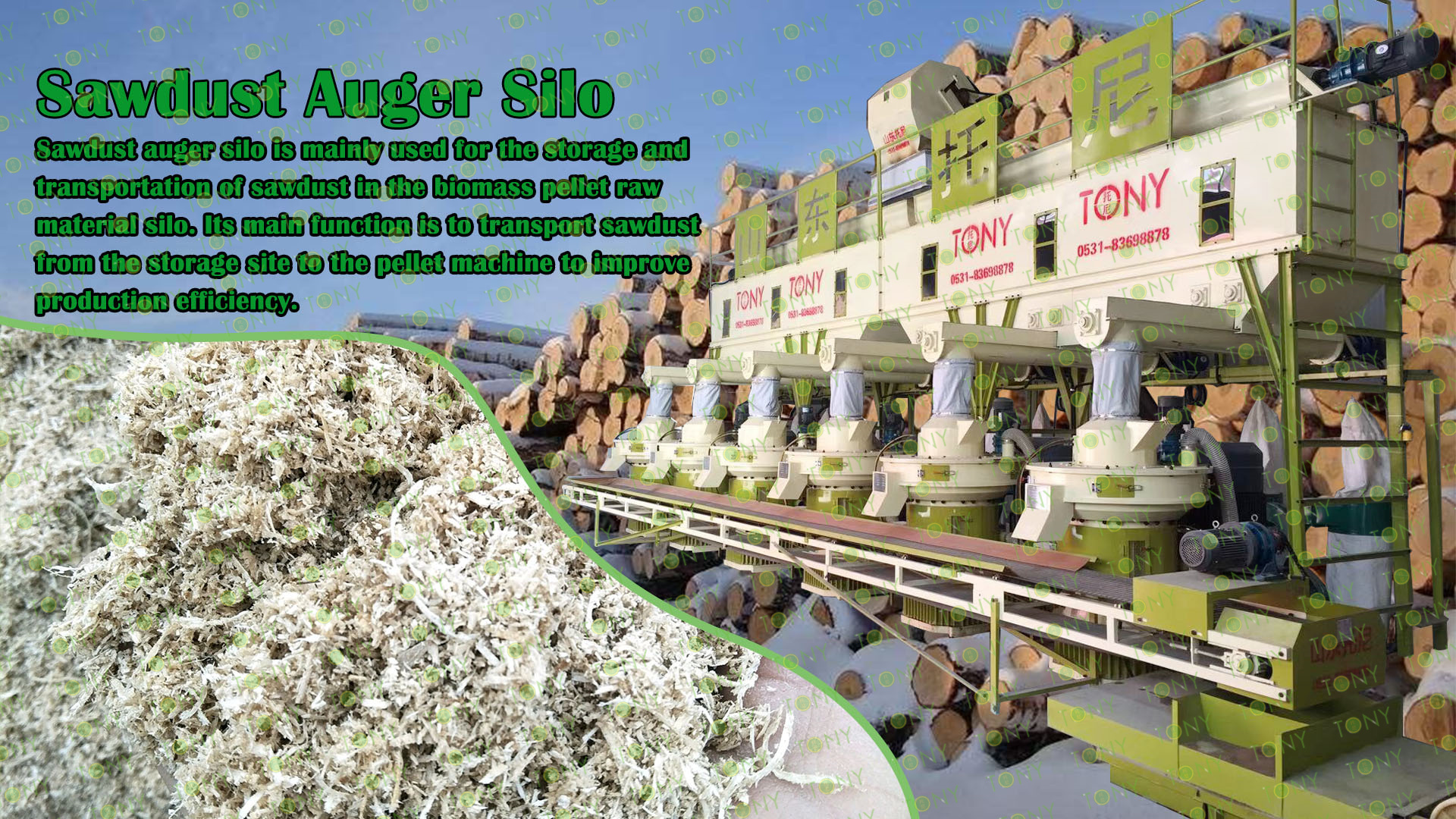

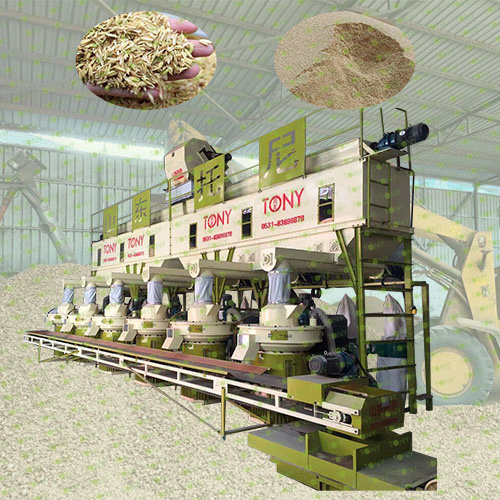 |
Sawdust Auger Silos are usually a device used to transport and store sawdust. It mainly consists of two parts: a screw conveyor (auger) and a storage bin. The screw conveyor part uses a rotating spiral blade to push the sawdust along a fixed casing for transportation. The storage bin is a container for temporary or long-term storage of sawdust, and its shape is generally cylindrical or square. Sawdust Auger Silo is widely used in biomass pellet production, feed processing, farms, plastic plants and many other industries. Its main function is to transport materials such as sawdust from low places to high places or far away through the rotation of the skein dragon, so as to facilitate subsequent processing and use Sawdust Auger Silo mainly uses the winch system to effectively prevent the material from forming an air arch in the silo. The configuration of sawdust winch bin ensures that there is always a batch of material waiting to enter the granulator, thereby improving production efficiency. TONY sawdust auger silo is an indispensable part of the biomass pellet production process, which significantly improves the production efficiency and the stability of equipment operation by optimizing the material handling process. For industries that need to handle large amounts of sawdust or other small particulate materials, this equipment is undoubtedly an ideal choice. |

|
When the motor is started, the reducer converts the high-speed rotation of the motor into a speed suitable for the auger to work, and the spiral shaft starts to rotate. During the rotation process, the spiral blade will continuously push the sawdust entering the feed port forward. If the auger bin is placed horizontally, the sawdust will move horizontally to the storage bin part under the push of the spiral blade. If the auger bin is placed at an angle, the sawdust can also be lifted and transported to a higher storage bin under the dual effects of gravity and spiral blades. The core component of the sawdust silo is a screw whose blades are installed in an inclined or horizontal cylinder. When it rotates, it pushes the material along the spiral path, thus achieving the conveying of the material. This design allows the sawdust silo to transport material in horizontal, inclined and even vertical directions. Sawdust silo is suitable for conveying various types of materials, including but not limited to: Non-adhesive dry powder materials and small particle materials: such as cement, fly ash, lime, grain, sawdust, wood chips, etc. Viscous and easily wound materials: such as sludge, biomass, garbage, etc. |
 |

1.In Terms Of Conveying Capacity:
Efficient Conveying: It can convey sawdust and other materials quickly and stably, with high conveying efficiency. For example, in a wood processing workshop, sawdust can be transported from the production area to the storage area or subsequent processing equipment in a timely manner to ensure the continuity of production.
Large Conveying Volume: According to different models and designs, it can meet the conveying volume requirements of production of different scales. Whether it is a small wood processing plant or a large biomass fuel production base, you can find a suitable sawdust silo to meet the conveying task.
Adjustability: Usually, the conveying volume can be precisely controlled by adjusting the speed and other parameters of the screw conveyor to meet the needs of different production links. For example, when used in conjunction with equipment such as a pellet machine, the sawdust conveying volume can be flexibly adjusted according to the feed speed requirements of the pellet machine.
2.Structural Design:
Compactness: The structure is relatively compact and occupies little space. It is suitable for installation and use in factories, workshops and other places with limited space. Especially for some renovation projects of old factory buildings, the compact structure of the sawdust silo can better adapt to site conditions.
Good Sealing: Good sealing performance can effectively prevent sawdust from leaking during transportation, reduce dust flying, improve the working environment, and also avoid waste of materials and pollution to the surrounding environment.
Firm Connection: The components are firmly connected to each other, which can withstand various stresses and vibrations during sawdust transportation and ensure the long-term stable operation of the equipment. For example, the connection between the spiral shaft and the hanging bearing, head and tail shaft usually adopts a reliable connection method to ensure that there will be no loosening, falling off and other problems during long-term operation.

High Conveying Efficiency:
Continuous and stable conveying: The auger (screw conveyor) can continuously and evenly convey sawdust, and is not affected by factors such as material accumulation and shape, ensuring a stable supply of sawdust during the production process, and effectively improving the overall production efficiency. For example, in the biomass pellet production line, the Sawdust Auger Silocan continuously feed the pellet machine to ensure the continuity of production.
Large conveying capacity: The auger bin can meet the large amount of sawdust conveying needs. Its conveying capacity is strong and can convey more sawdust per unit time, which meets the needs of large-scale production.
Prevent Material Blockage:
Structural features Anti-blocking: The spiral structure of the auger can stir and push the sawdust to avoid sawdust accumulation and agglomeration in the bin, reducing the possibility of material blockage.
Bidirectional rotation function (partial): The auger of some advanced sawdust auger bins has a bidirectional rotation function. When the material is blocked, the auger can be rotated in the opposite direction to clear the material, ensuring the smoothness of the conveying.
Good Sealing:
Reducing dust leakage: The sawdust is in a closed space during transportation, and the auger is tightly connected to the bin, which can effectively prevent the sawdust dust from leaking into the surrounding environment, keeping the working environment clean, reducing material waste and environmental pollution, and meeting environmental protection requirements.
Reducing the risk of material moisture: Good sealing can also prevent external moisture and humidity from entering the bin, avoiding sawdust from getting damp, and ensuring the quality of sawdust and subsequent use effects.
Strong Spatial Adaptability:
Flexible layout: The auger bin has a compact structure and occupies little space. It can be flexibly arranged according to the actual situation of the production site. It can adapt well to horizontal, inclined or vertical transportation, which is especially suitable for production sites with limited space.
Multi-point feeding and discharging: The feed and discharge ports can be set at different positions, which is convenient for connection and coordination with other equipment, realizing multi-directional transportation and distribution of materials, and improving the flexibility and convenience of the production system.

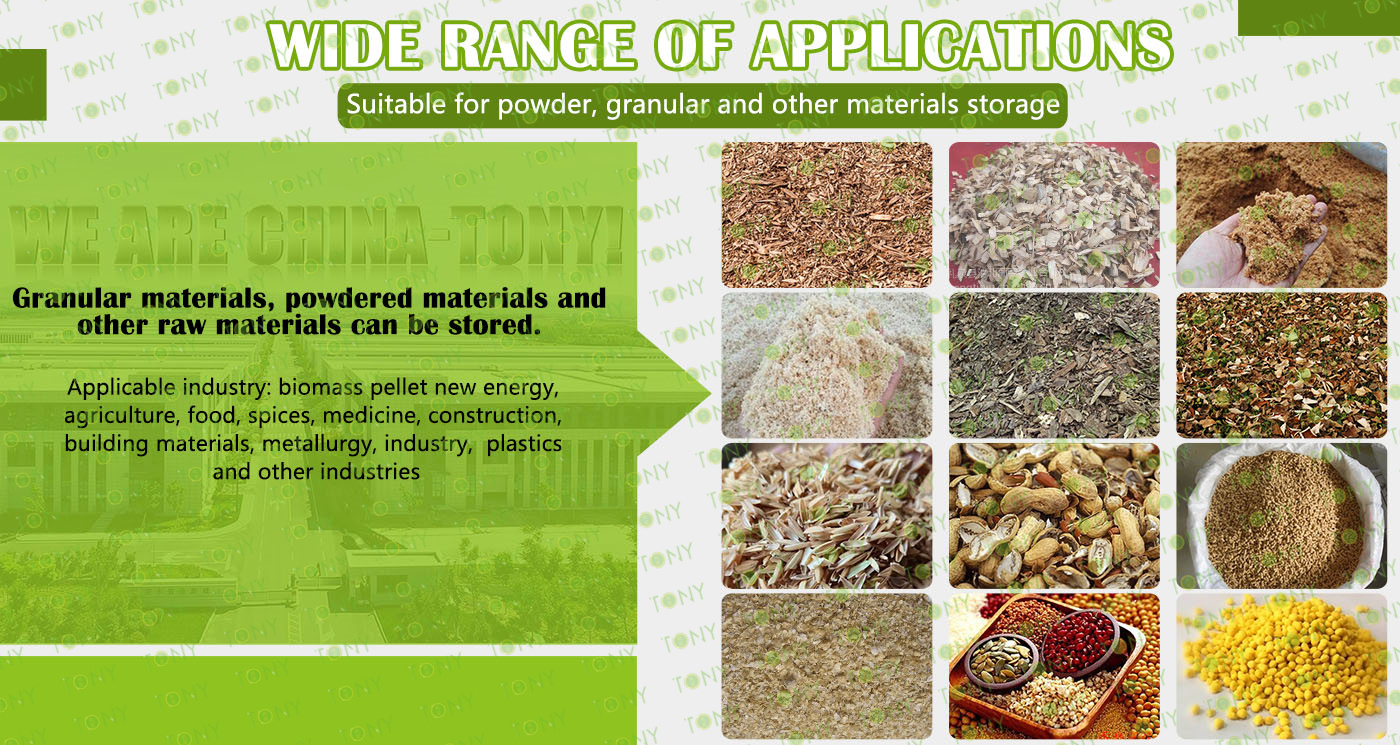

|
The working process of the Sawdust Auger Silo is as follows: Feeding: Sawdust is fed into the auger bin through the feed port. Conveying: Start the auger, and the auger rotates to push the sawdust forward along the bin body. Unloading: When the sawdust is conveyed to the discharge port, it is discharged from the auger bin through the unloading device. Cleaning: Clean the inside of the auger bin regularly to prevent sawdust residue and blockage. Maintenance: Regularly inspect and maintain the auger bin to ensure its normal operation. |
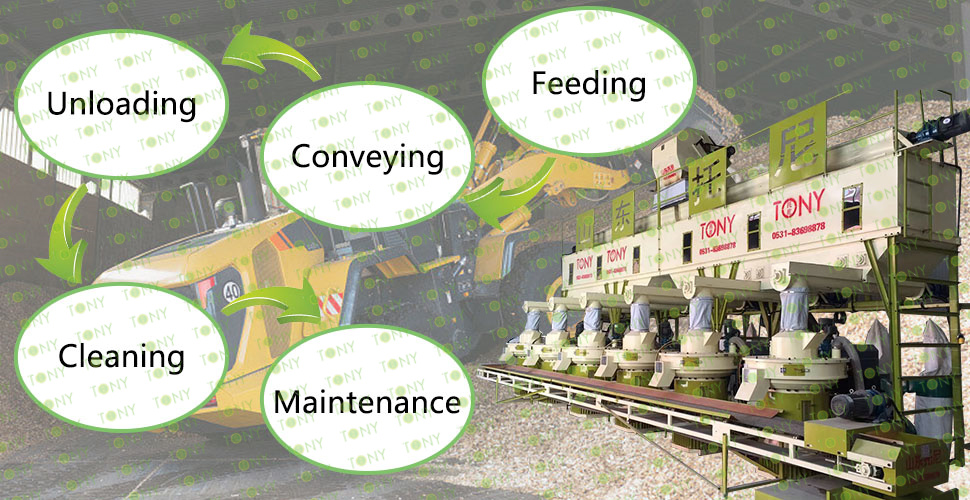 |

Daily Maintenance:
Cleaning: Clean the inner and outer surfaces of the Sawdust Auger Siloregularly to remove attached sawdust, dust and debris. This not only keeps the appearance of the equipment clean, but also prevents debris from entering the interior of the equipment and affecting its normal operation. Use tools such as brooms, vacuum cleaners or compressed air for cleaning, but be careful to avoid using tools that are too sharp or hard to avoid scratching the surface of the equipment.
Tightening Inspection: Check whether the connecting bolts and nuts of various parts of the equipment are loose, especially the connection between the spiral shaft and the drive device, the connection between the inlet and outlet, etc. If looseness is found, tighten it in time with tools such as wrenches to ensure the stability and safety of the equipment during operation. It is recommended to perform a tightening inspection once a week.
Lubrication And Maintenance: Regularly lubricate the transmission parts of the sawdust auger bin, such as bearings, gears, chains, etc. Select suitable lubricating oil or grease, and add it according to the requirements of the equipment manual. Generally speaking, bearings need to be lubricated every 3-6 months, and chains need to be greased every 1-2 months.
Regular Inspection:
Spiral Blade Inspection: Check the wear of the spiral blades at regular intervals. If the blades are found to be severely worn, deformed or cracked, they should be replaced in time. Otherwise, it will affect the conveying efficiency and performance of the equipment. The inspection frequency can be determined according to the frequency of use of the equipment and the working environment, generally every 3-6 months.
Electrical System Inspection: Regularly check whether the lines of the electrical system are normal, whether there are any damage, short circuit, poor contact and other problems. At the same time, check the operation of the motor, including whether the temperature, noise, vibration, etc. of the motor are normal. If problems are found in the electrical system, professionals should be found to repair or replace them in time. It is recommended to conduct a comprehensive inspection of the electrical system every six months.
Sealing Performance Inspection: Check the sealing parts of the sawdust auger bin, such as shaft seals, flange connections, etc., to see if there is any leakage. If the seal is found to be aging, damaged or not sealed tightly, the seal should be replaced in time to ensure the sealing of the equipment and prevent sawdust leakage and dust from entering.

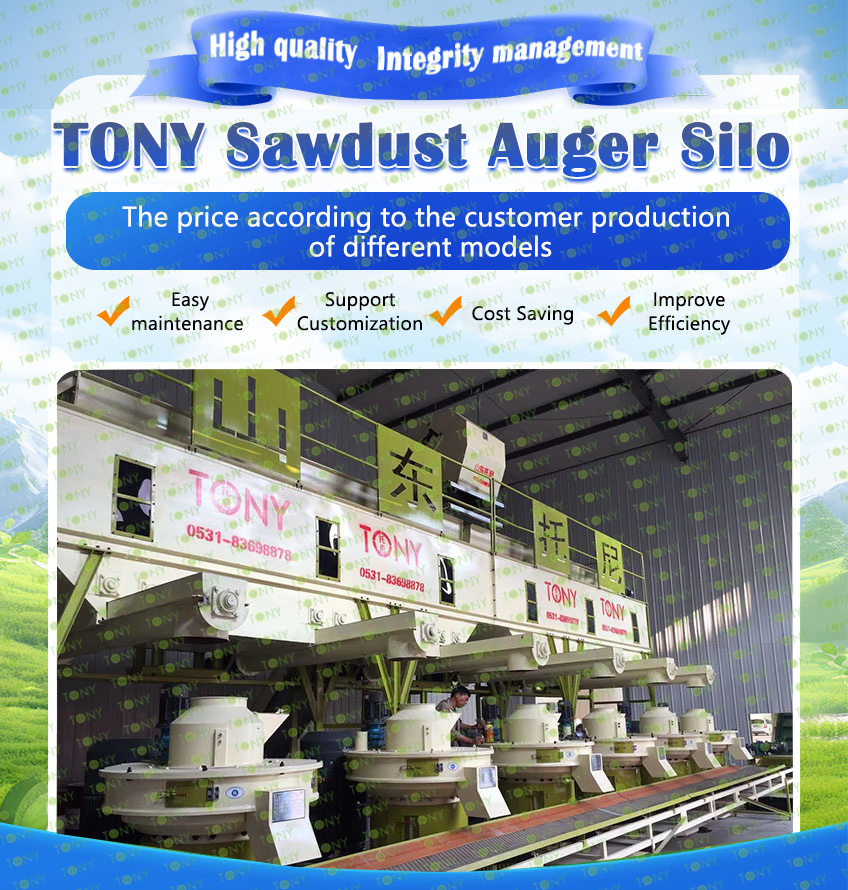 |
You truly get what you pay for. In other words, the price you pay invariably hinges on the value you receive. Presently, the Sawdust Auger Silo market is in a rather chaotic state. With a multitude of products and suppliers vying for attention, it has become a minefield for customers. Hence, purchasers must exercise the utmost caution when making a buying decision. Rather than hastily basing your choice solely on price, it is essential to conduct a comprehensive inspection of several crucial comprehensive indicators. Firstly, product quality should be your top priority. High-quality sawdust auger silos will ensure durability, reliable performance, and minimal risk of breakdowns, safeguarding your production process in the long run. Secondly, take a close look at the manufacturer's scale and strength. A well-established and sizable manufacturer is more likely to have advanced production technologies, strict quality control systems, and sufficient resources to address any potential issues promptly. Thirdly, pre-sales and after-sales service ability cannot be overlooked. Responsive and professional service teams can provide you with detailed product consultations before purchase, and efficient after-sales support when you encounter problems, saving you a great deal of trouble and time. Additionally, the research and development design ability of the manufacturer is also significant. Those with strong R&D capabilities can continuously innovate and optimize their products to meet the evolving needs of the market and your specific requirements. Please bear in mind: if you opt for a sawdust auger silo with an extremely low purchase cost, you will almost certainly face exorbitant later use costs. Why is this the case? Well, equipment that comes at a very low price often leads to frequent malfunctions, forcing you to deal with endless maintenance headaches. So, always make a well-informed and rational purchase decision. |

Biomass Energy Production:
Pellet Fuel Preparation: In the sawdust pellet machine production line, the Sawdust Auger Silocan be used to store and transport sawdust raw materials to the pellet machine. The sawdust that has been pre-treated by crushing, drying, etc. is transported to the auger bin for temporary storage, and then evenly supplied to the pellet machine according to production needs to ensure the continuous and stable operation of the pellet machine, and produce solid pellet fuel that can be used for heating, hot water boilers, industrial boilers, biomass power plants, etc.
Biomass Boiler Feeding: As a fuel storage and transportation device for biomass boilers, the Sawdust Auger Silocan provide a stable supply of sawdust fuel for the boiler. Through the rotation of the auger, the sawdust is transported from the bin to the feed port of the boiler to ensure the normal combustion of the boiler and realize the conversion and utilization of energy.
Wood Processing Industry:
Sawdust Collection And Storage: A large amount of sawdust will be generated during the wood processing process, and the Sawdust Auger Silocan be used as a sawdust collection and storage device. It can collect the scattered sawdust and prevent the sawdust from flying around in the workshop, which not only keeps the production environment clean, but also reduces the waste and loss of sawdust. For example, in furniture factories, wood processing plants and other places, sawdust auger bins can be connected to production equipment to collect sawdust in real time.
Waste Treatment And Reuse: For scraps, sawdust and other waste materials generated during wood processing, they can be stored in sawdust auger bins after crushing. These waste materials can be further used to produce artificial boards, papermaking, charcoal making, etc., to achieve resource recycling and improve the comprehensive utilization rate of wood.
Agricultural Field:
Fermentation Bed Base Material Supply: Sawdust is a high-quality fermentation bed material and is widely used in the breeding industry. Sawdust auger bins can be used to store and transport sawdust to provide sufficient base material for the fermentation bed in the breeding site. Through the auger's transportation, the sawdust can be evenly laid on the fermentation bed, providing a comfortable living environment for animals, and using the bioheat in the fermentation process to provide warmth for the breeding site.
Organic Fertilizer Production: In the production process of organic fertilizer, sawdust can be added to fertilizer as an organic raw material to increase the organic matter content of the fertilizer. TheSawdust Auger Silocan transport the sawdust to the fertilizer production equipment, where it is mixed and fermented with other raw materials to produce high-quality organic fertilizer.
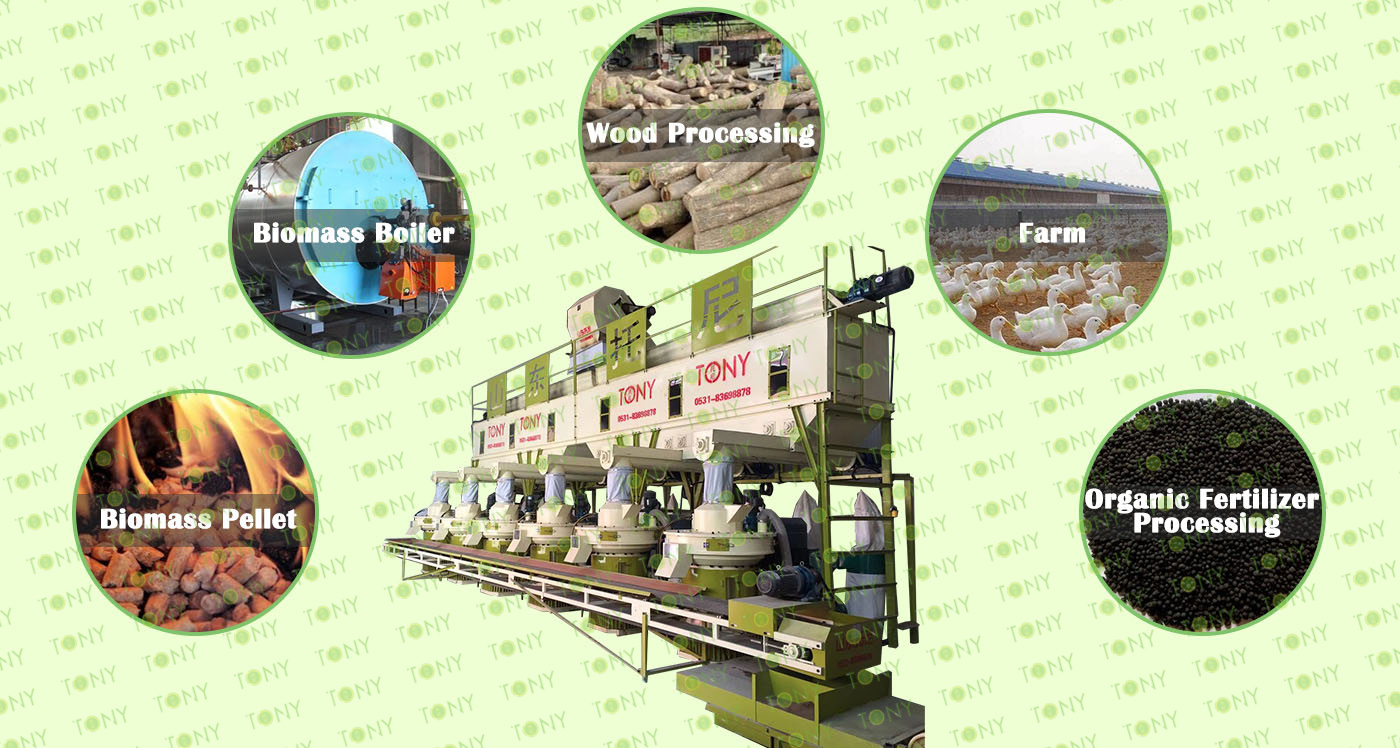

Delivery Volume Requirements:
Clear Daily Production Requirements: Determine the delivery capacity of the auger bin according to the demand for sawdust in the production or use scenario. If it is a small wood processing workshop with a small daily sawdust output, then a model with a relatively small delivery volume can meet the demand; if it is a large biomass energy production plant that needs to process a large amount of sawdust, it is necessary to choose an auger bin model with a large delivery volume. For example, for a scenario with an hourly sawdust output of 1-5 cubic meters, a small auger bin can be selected, with a delivery capacity of about 3-10 cubic meters per hour; and for a large factory with an hourly sawdust output of more than 10 cubic meters, a large auger bin with a delivery capacity of more than 20 cubic meters per hour is required.
Consider Future Production Expansion: If the company has plans to expand its production scale in the future, then when choosing the auger bin model, it is necessary to leave a certain amount of delivery volume margin so that the auger bin can still meet production needs after the production scale is expanded.
Transportation Distance:
Horizontal Transportation Distance: Measure the horizontal distance from the place where the sawdust is produced to the place where it is used or stored. Generally speaking, when the horizontal conveying distance is short, the requirements for the auger bin are relatively low; but if the horizontal conveying distance is long, it is necessary to select an auger bin model with higher power and more reasonable spiral blade structure to ensure that the sawdust can be smoothly transported to the destination. For example, if the horizontal conveying distance is within 10 meters, you can choose an auger bin with ordinary power; if the horizontal conveying distance exceeds 20 meters, you need to choose an auger bin with high power and large diameter spiral blades.
Vertical Conveying Height: If the sawdust needs to be transported vertically, such as from the ground to a high storage bin or processing equipment, then the appropriate auger bin should be selected according to the vertical conveying height. The higher the vertical conveying height, the greater the required auger bin power, and the higher the requirements for the strength and structural design of the spiral blades. For example, if the vertical conveying height is less than 5 meters, you can choose a medium-power auger bin; if the vertical conveying height is more than 10 meters, you need to choose an auger bin with high power and high-strength spiral blades.

|
24 Hours Online Service. -Inquiry will be replied within 2 hours. -All-the-way tracking service offered from placing order to delivery. -Free training for operation, debugging and daily maintenance. -We can provide professional guide installation. -One year warranty and all-round after-sales service. -Customized design and flow chart are available for our clients. -Independent R&D team and strict & scientific management system. |
 |

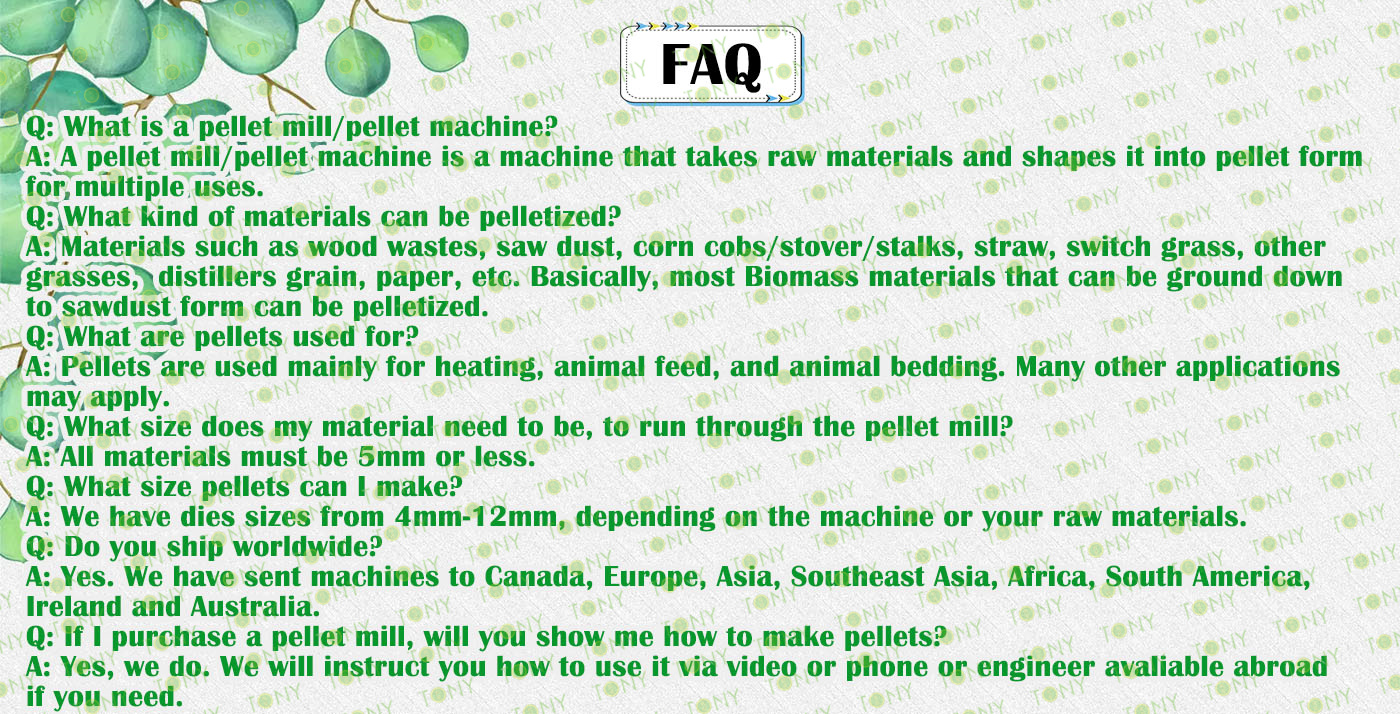



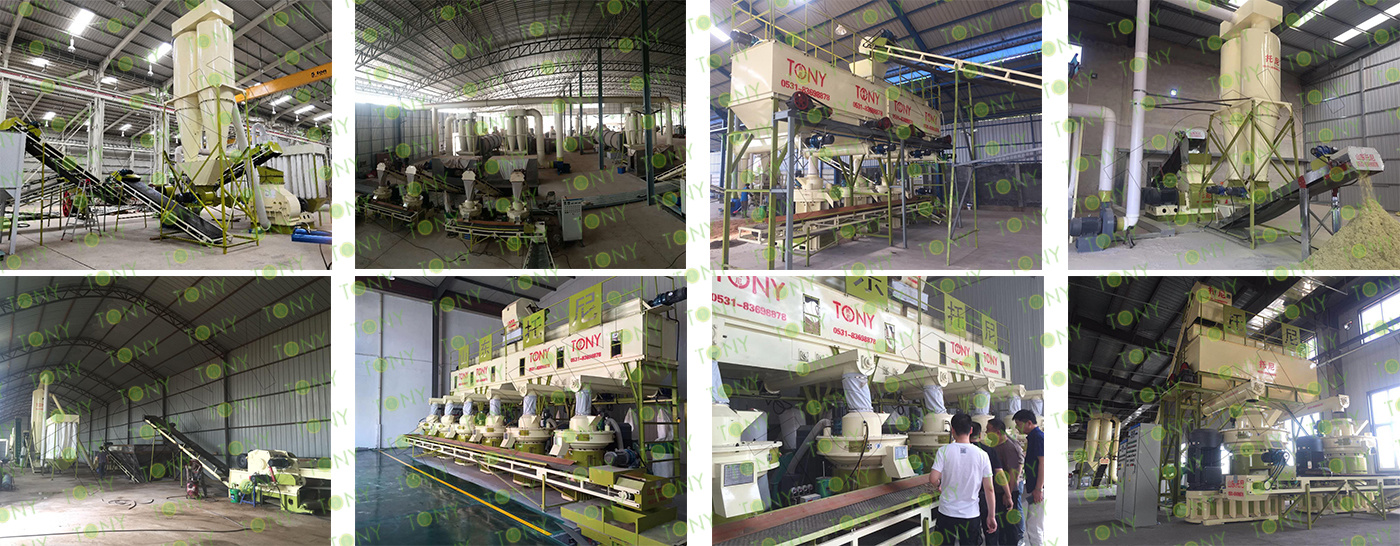
2025 Tony Machinery - All Rights Reserved. Map